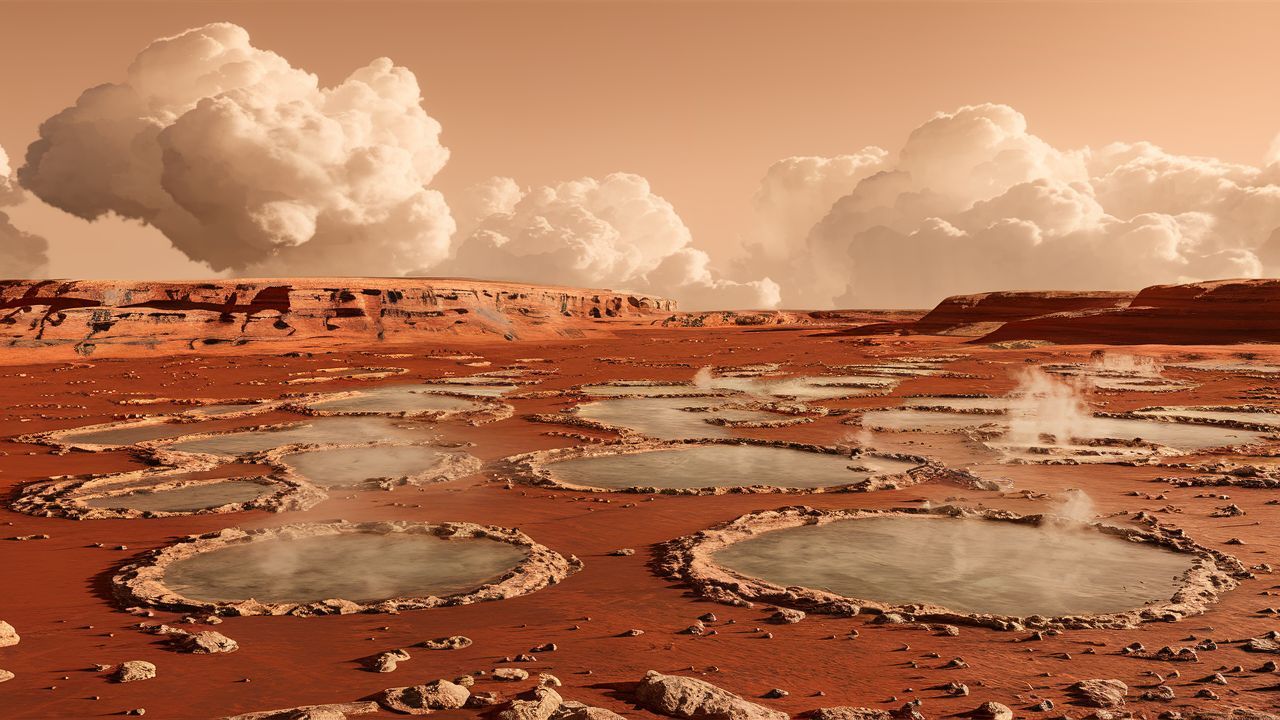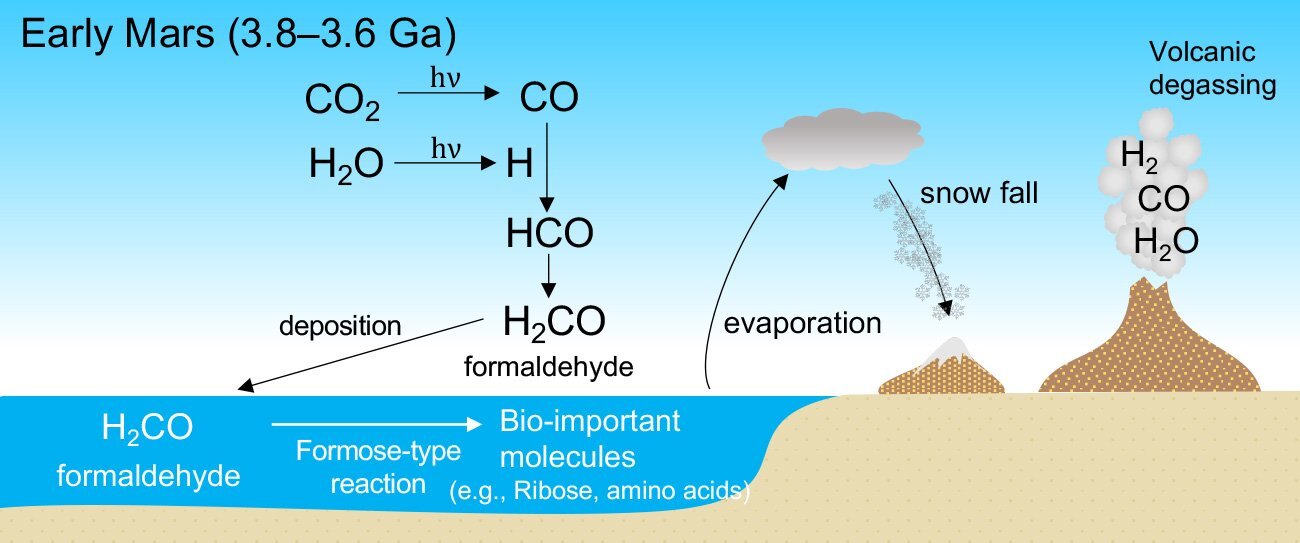The Martian formaldehyde enigma: a clue to past life on the Red Planet?
Follow us on Google News (click on ☆)

About 3.6 to 3.8 billion years ago, Mars could have had a temperate climate, made possible by the warming properties of gases such as hydrogen. This milder period might have allowed the existence of liquid water, an essential element for the development of life as we know it. Scientists have explored the possibility that formaldehyde, a simple organic compound and a key precursor for the formation of essential biomolecules, could have formed in this primitive atmosphere.
Using an advanced computer model, the team simulated the potential atmospheric composition of Mars at that time, starting from the premise that the atmosphere was rich in carbon dioxide, hydrogen, and carbon monoxide. The results of these simulations indicate that the Martian atmosphere could have offered a continuous source of formaldehyde, facilitating the creation of various organic compounds. These findings raise the hypothesis that the organic materials detected on the Martian surface might come from atmospheric sources, particularly during the planet's first two geological periods.
The study reveals conditions favorable to the formation of biomolecules on Mars, expanding our understanding of the planet's ability to support life in its ancient past. "Our research provides crucial information on the chemical processes that might have occurred on Mars, offering valuable clues about the possibility of past life on the planet," explains Shungo Koyama, the lead author of the study.

Diagram showing the formation of formaldehyde (H2CO) in the warm atmosphere of ancient Mars and its conversion into vital molecules for life in the ocean.
Credit: Shungo Koyama
The team now plans to analyze geological data collected by NASA's Martian rovers, aiming to deepen their understanding of the organic materials present at the beginning of the planet's history. By comparing the expected carbon isotopes of ancient formaldehyde with the data from Martian samples, researchers hope to gain a better understanding of the processes that shaped the organic chemistry of Mars.